When it comes to working out your butt, you should know that certain exercises that seem like they target your butt may not actually be doing anything to boost your caboose.
Depending on some key form issues, you may not actually be developing your butt, no matter which exercises you choose.
Let’s talk about 3 common subpar butt exercises we see all the time and why they just don’t work.
Keep in mind as you’re reading this that oftentimes it’s not the exercise itself that doesn’t work, but rather the WAY that it’s done. Read to the end and I’ll give you some tips on how you can make even the least effective butt exercises work better for you, along with a 15-minute workout that will literally take your butt to the next level.
3 Butt Exercises That Don’t Work
Donkey kickbacks (Without Resistance)
The problem with this one is the lack of adjustable resistance. Without resistance, there’s just really no great effect on your butt, especially over time. Sure they might be hard the first time you try them, but after a few weeks, you’ll be yawning between reps.
To make this type of kickback effective, you’d have to either add resistance or continue until you actually feel something (probably over 50 reps). But let’s be real—you probably don’t have the time or attention span to be doing donkey kicks all day. You’d get totally bored if you had to do that many reps, for several sets, several times per week. [tweet_quote] Donkey kickbacks aren’t a great exercise, unless you add some resistance to your moves. [/tweet_quote]
If you quit too soon (before you feel your muscles giving out), then you’re not likely to see any change in the lift or firmness of your butt.
Another problem with donkey kickbacks is that most people don’t know that a fired-up and stabilized core is key to actually getting your butt muscles to do the movement (instead of arching your back and working out your hips and core instead). If you just swing your leg into the air with momentum and without squeezing your butt muscles at all, then you’re not actually working out your butt. The height of your leg is NOT the best determinant of how hard you’re working. If your form is correct, then your range of motion should be pretty restricted.
There are many variations of kickbacks, and some of them can be very effective. You just have to make sure you don’t waste your time with sloppy, no-resistance reps.
Shallow Squats
I would just say squats, but the truth is deep or low squats actually are effective for training your butt. The problem is that most people just don’t go low enough when they are squatting. What you see in the picture here is a quarter squat, and the only muscles fired up are the quads.
If you do go low, you need to know how to stand back upright using your butt muscles instead of your back (no leaning forward). [tweet_quote] When doing squats, make sure you go deep enough to fire up your butt.[/tweet_quote]
If you are doing shallow squats, meaning your butt does not dip lower than the height of your knees, then you are likely not stimulating muscle growth where you want it. If you have noticed your quads are very sore after a butt training workout, then this is the reason why. In order to make squats effective for the butt, you need to both go deep enough and press your heels into the floor, shifting your weight back as far as possible with NO forward lean.
The easiest way to figure out if you have a forward lean in your squat is to stand facing a wall, with your nose to the wall and your toes touching it. Put your arms up with your hands behind your head and squat down as low as you can go. If you cannot squat down to the bottom without falling backwards, then you likely have a forward lean that needs to be corrected in order to make your squats more effective.
Mini Step-Ups
Step-ups are a great exercise for your butt, but again, only if they are deep enough. If you are using a step that’s any lower than the height of your knees, you’re likely not working your glute muscles.
Another big mistake is using only your toe or the ball of your foot to press off of, instead of your heel. When your body weight is primarily on the ball of your foot or your toes, you are using more quad than butt muscles. You must press off your heel, keep your core upright and tight, and purposely engage your butt and hamstring muscles.
Ideally you’d want to use a step that is just slightly higher than the height of your knees when you’re standing next to it. Make sure the step has a firm edge (rather than a soft edge), and if you need something to hold onto for balance, do them next to a wall.
Higher is not always better. If you choose a step that is too high and you struggle to even lift your foot on top of it, then your form will probably be all over the place and your attention not likely focused on your butt where it should be. Make sure the step is high enough to get you to bend your knee at a 90-degree angle, but not too high that you struggle to reach it.
If you only have access to lower steps, you can make it work by bending your back knee into a lunge position before stepping up.
[tweet_quote] When doing step-up exercises, knee angles matter. And higher isn’t always better.[/tweet_quote]
Adding resistance to your step-ups after you get comfortable with your form and balance can help you take your workout to the next level.
Exercise selection is important, but doing the exercises correctly is far more important if you want to see your glutes salute.
Some key points to remember when training your butt:
- Your knees must bend past the 90-degree line in order to stretch the glutes and put them in prime position for a more intense contraction. If you do not go to the proper depth needed for glute stimulation, then your quads (thigh muscles) are getting the grunt of the workout.
- You must have enough resistance to stimulate your muscle. If you can do more than 30-50 reps per side without failing, it’s time to add some resistance or correct your form.
- You must keep your core engaged and in a fixed position when working your glutes. Otherwise, you’re likely working your hips and back instead.
- You must press through your heels and lean back, rather than forward, to make sure the majority of your weight is in the back rather than the front. If you lean too far forward or have the pressure on your toes, you’ll be unintentionally working your quads.
15-Minute Butt Workout to Lift and Firm
With those key points in mind, here’s a 15-minute workout to lift and firm your glutes.
Equipment you’ll need for this workout:
- 15-inch or higher step stool or bench (about the height of your knees)
- Dumbbell (I’m using a 20-lb dumbbell, but choose a weight you’re comfortable with)
- Swiss ball (any size)
The Warm-up:
Complete one set of each of these 3 moves.
15 Glute Bridges
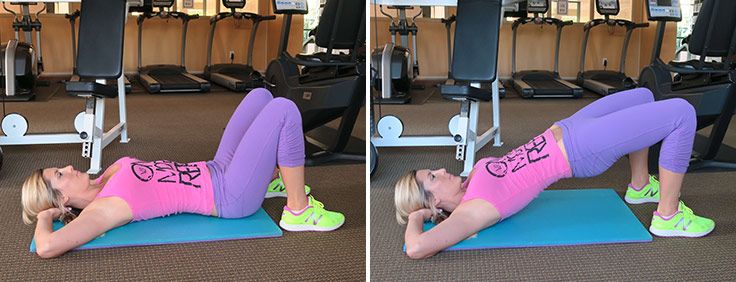
Lie flat on the floor, bring your heels close to your butt and plant your feet firmly on the ground. With your hands rested behind your head, lift your butt up in the air, forming a bridge shape with your body. Make sure the movement is slow and controlled—no resting your butt on the floor. Keep your core locked tight. Contract your glute muscles with each rep. Exhale with each contraction.
15 Swiss Ball Rear Leg Raises
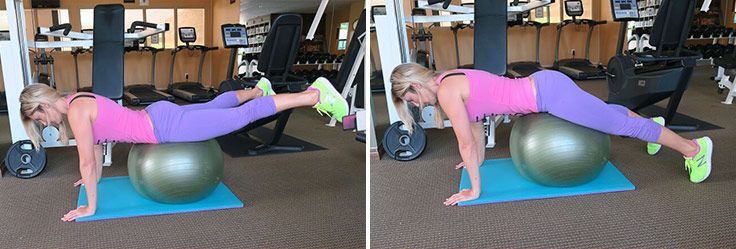
Lie facing down on the Swiss ball, with the ball positioned right under your hips. Your hands should be firmly planted on the ground just below your shoulders and your toes should be lightly touching the ground. Lift your legs behind you until your body forms a straight line. Squeeze your butt muscles as firmly as you can. Slowly lower your toes back down to the ground and repeat.
20 Bouncy Squats (Without Weight)
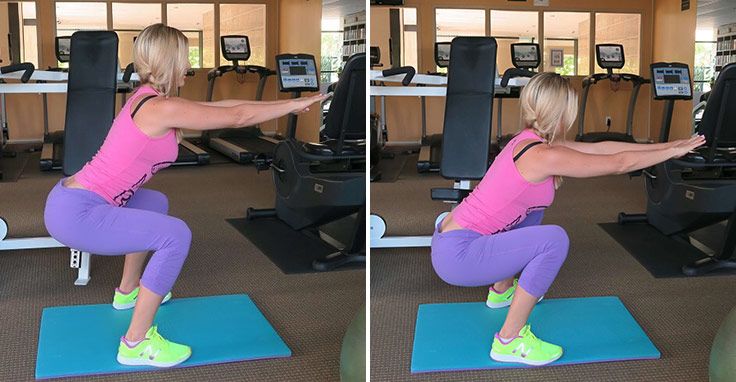
Stand with your feet about shoulder-width apart and toes slightly pointed outward. Drop down into a squat, as low as you can go, then rise up to a 90-degree bend of your knees and drop back down to the bottom again, then stand all the way up. This counts as one rep. Continue for 20 total reps, bouncing to the 90-degree bend each time. Make sure to keep the pressure in your heels and stick your butt out behind you so you feel this in your butt muscles instead of in your thighs.
The Workout:
Complete each of these 3 exercises as a circuit, for 15 reps each, 3 times
Flamingo Step-ups with Back Lunge
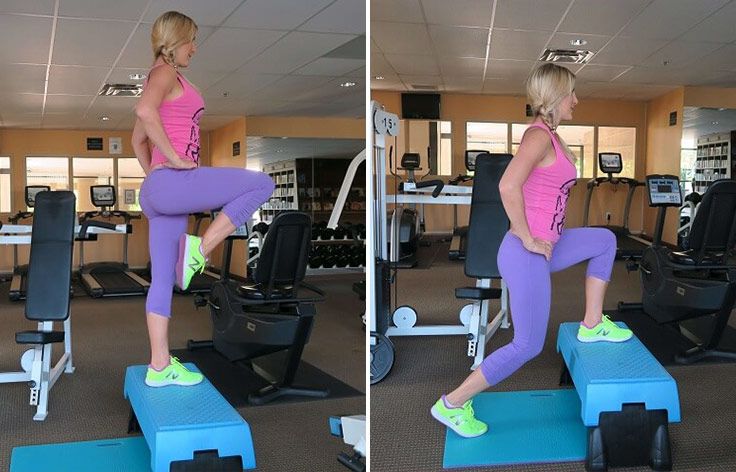
Starting with 1 foot up on your 15-inch or higher block or bench, step to the top, making sure to press into the bench with your heel, and raise your other leg up into a bent flamingo leg position. As you are lowering down, instead of stepping straight to the floor, you’ll step back further, going into a back lunge position. Never take your foot off the original starting position. Continue the reps until you get 15 on one side, then switch sides and continue for another 15 reps.
Swiss Ball Assisted Deep Squats with Dumbbell
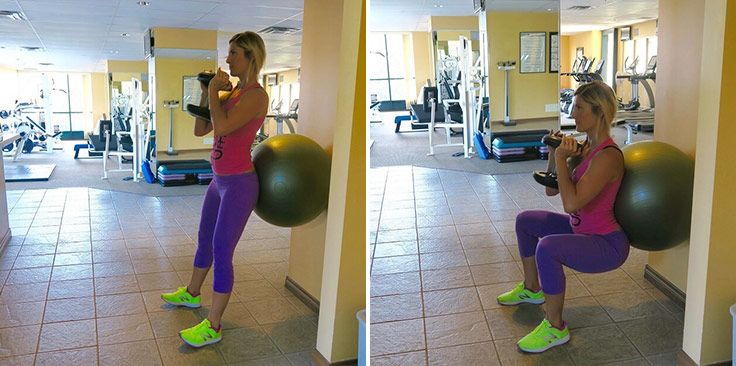
Stand against a wall, facing out, placing your Swiss ball between you and the wall, against your back, at the height of your waistline. Hold your dumbbell just under your chin with two hands. Place your feet about hip-width apart, with your toes slightly pointed outward. Lower your butt towards the floor while maintaining the upright position of your upper body. At the top of the movement, flex your butt and aim to feel a stretch in your butt at the bottom. Repeat for 15 reps.
Weighted Glute Bridges with Shoulders on Bench
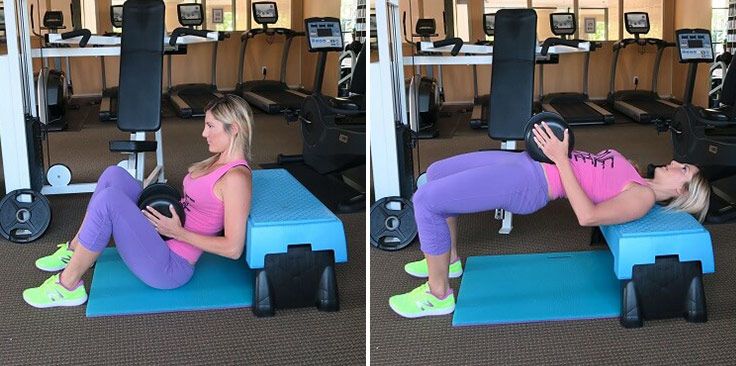
Start by sitting on the floor just in front of a bench and place your dumbbell on your lap. Press your shoulders into the bench and lift your hips until your body is in a tabletop position. Make sure to keep your core tight so your back doesn’t arch. Squeeze your butt muscles and slowly lower back down to the starting position. Repeat for 15 reps.

Continue to do these 3 exercises for 15 reps each, increasing the weight of the dumbbell if you feel you can handle more of a challenge.
I recommend including this into your routine up to 4 times per week for best results.
(Your Next Workout: Full-Body Kettlebell Fat-Burning Workout)


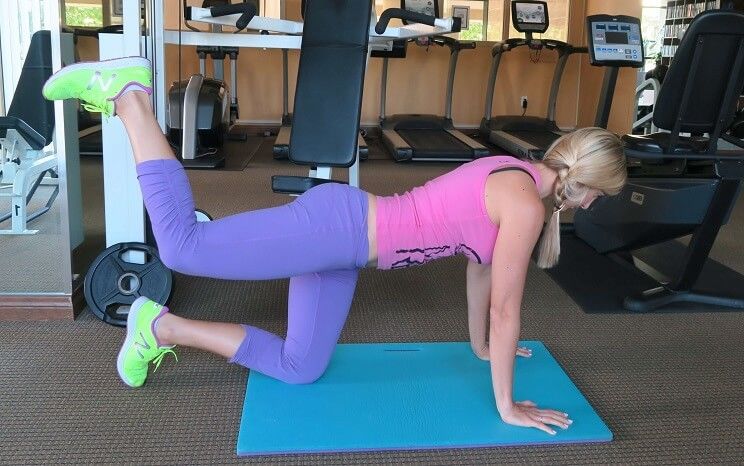
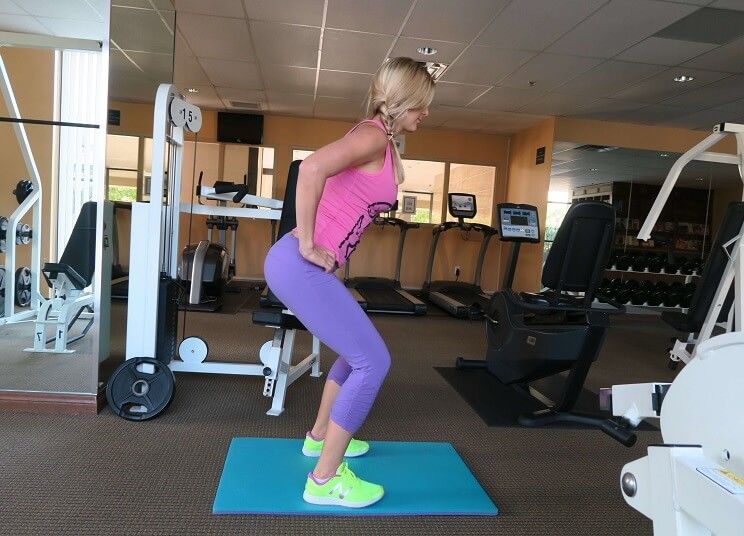
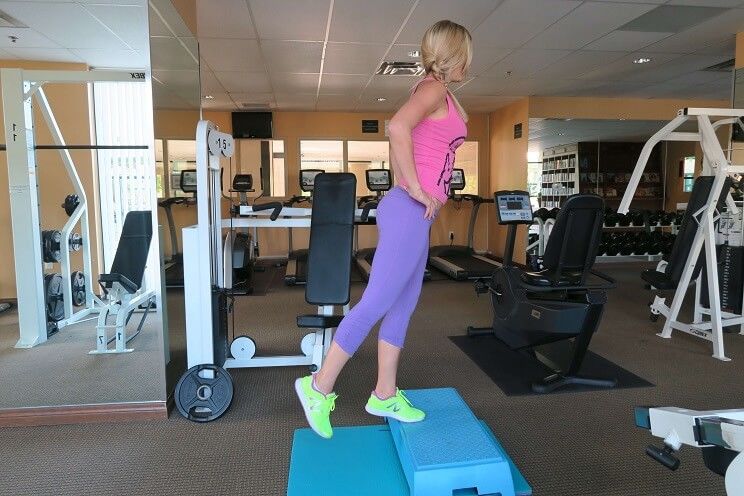
 Turmeric Pumpkin Spice Latte with Anti-Inflammatory Benefits
Turmeric Pumpkin Spice Latte with Anti-Inflammatory Benefits
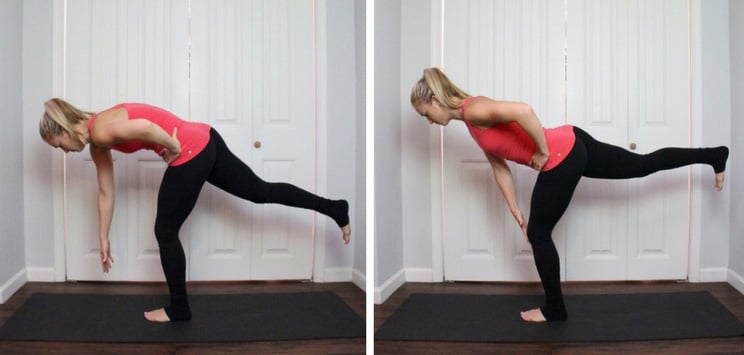
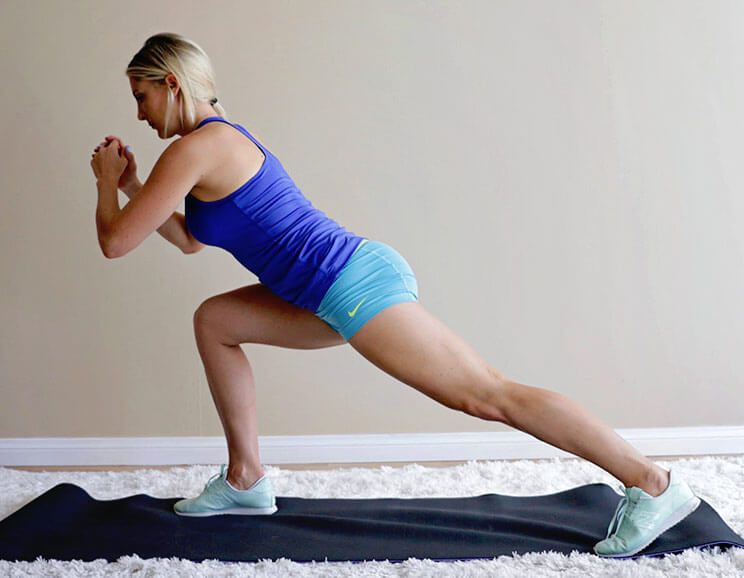
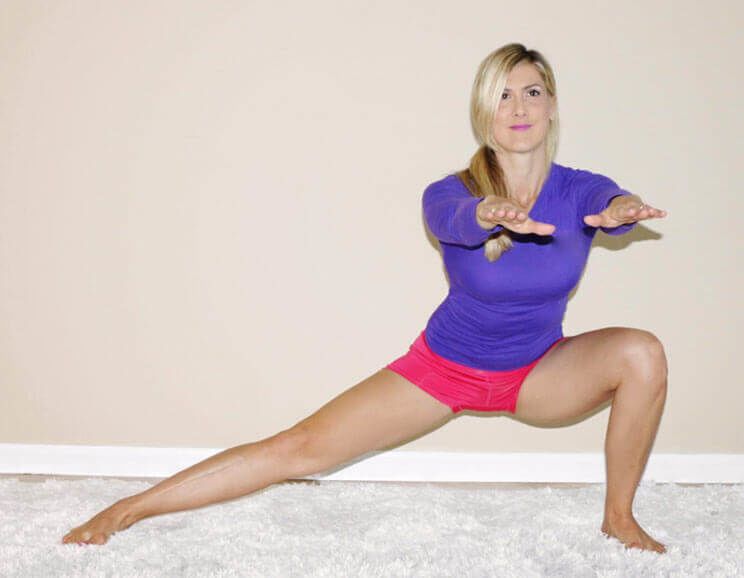
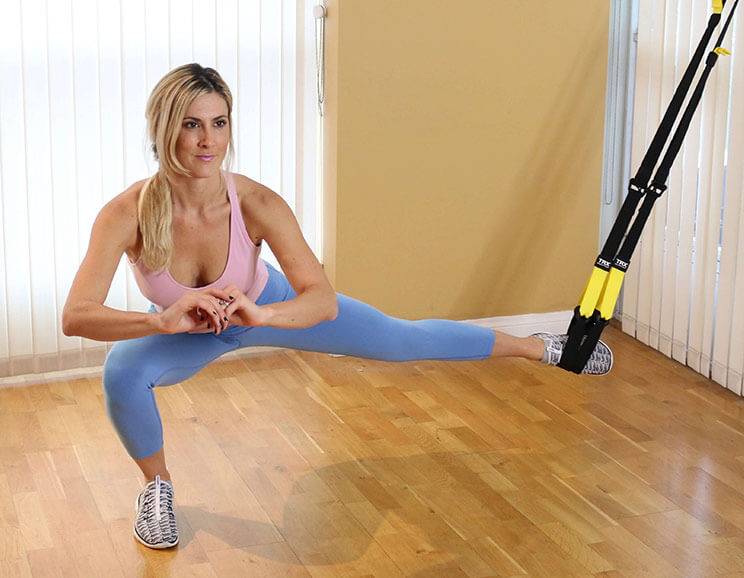
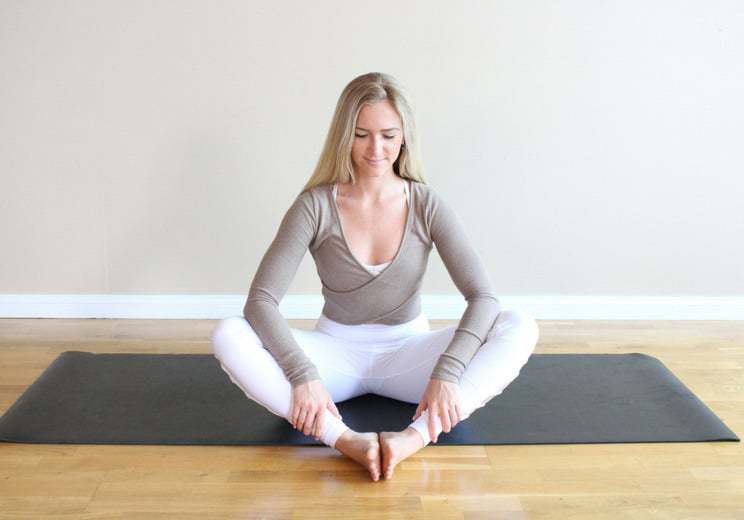
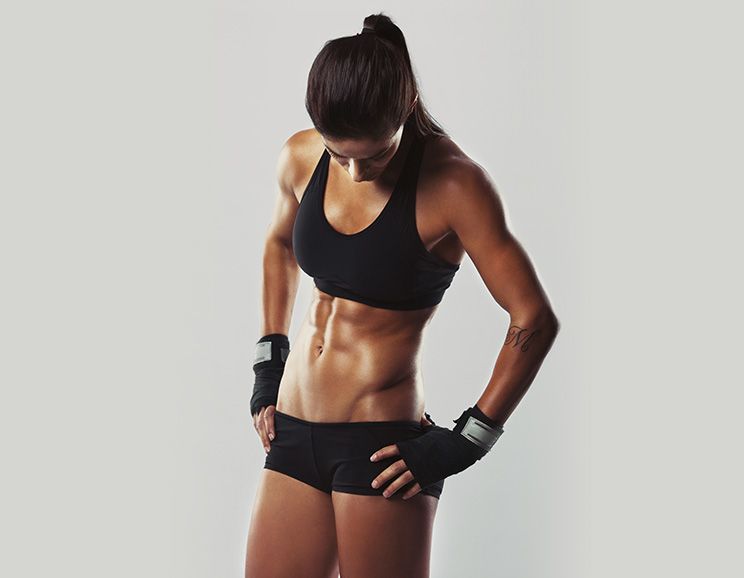
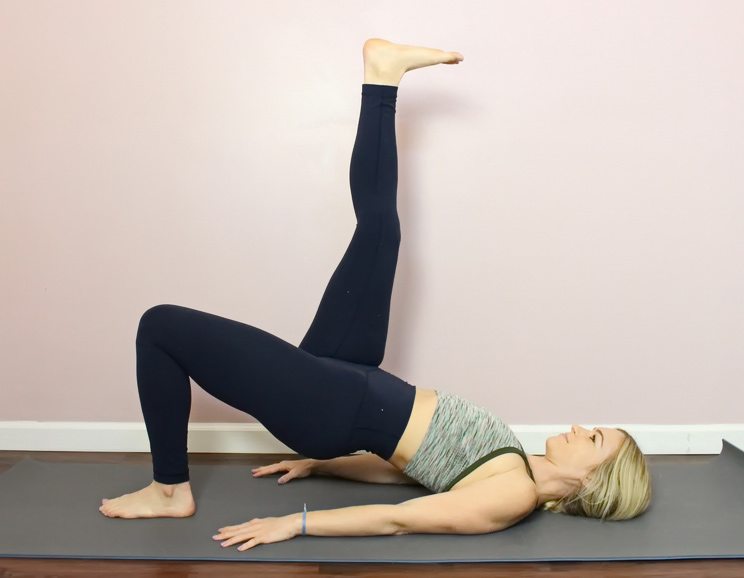
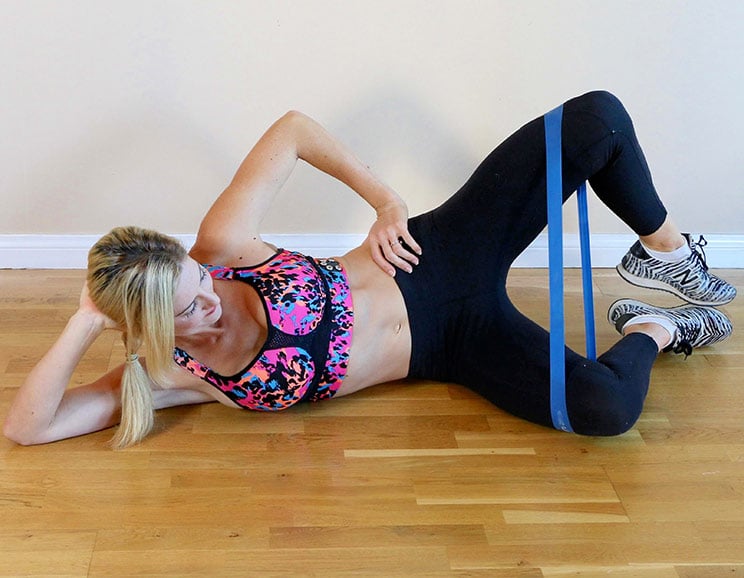
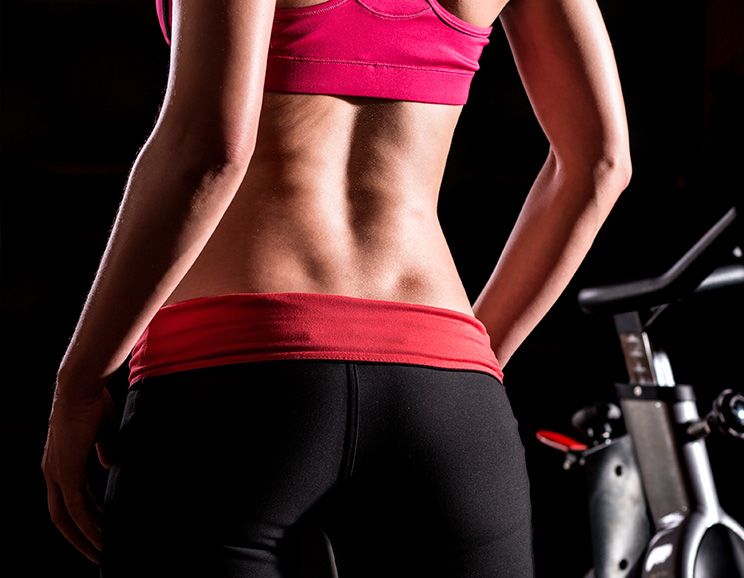
Show Comments